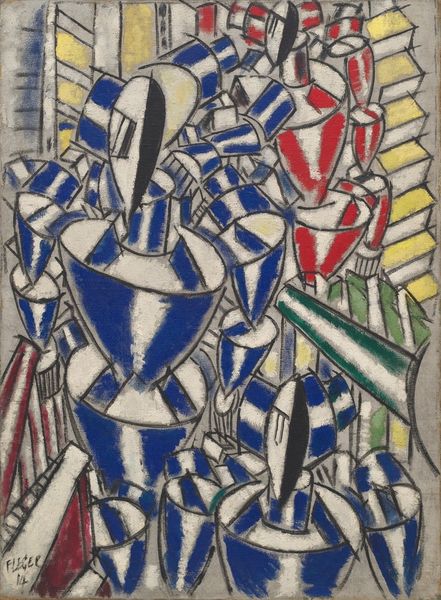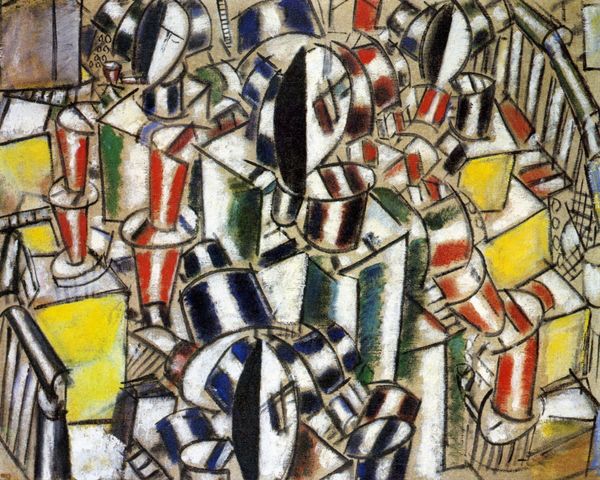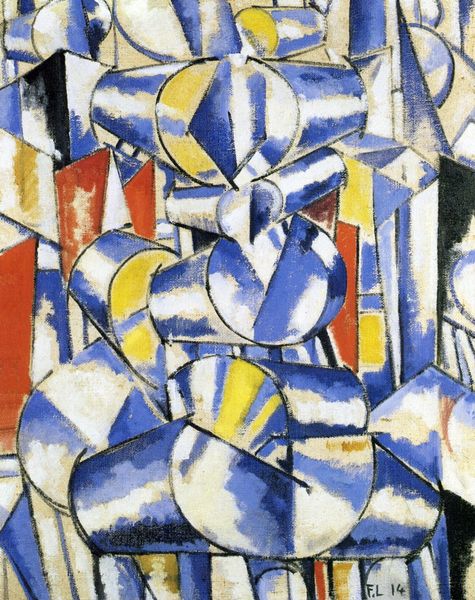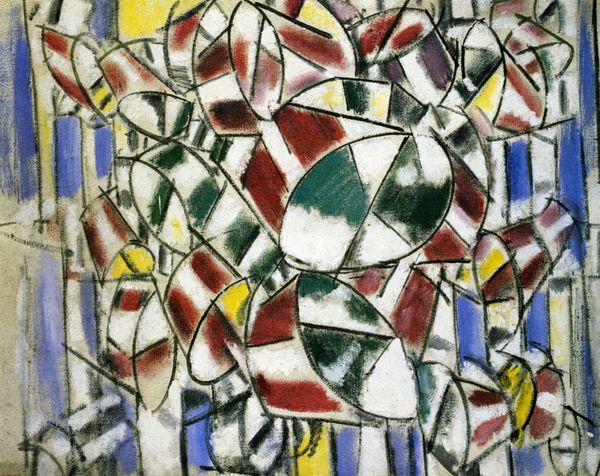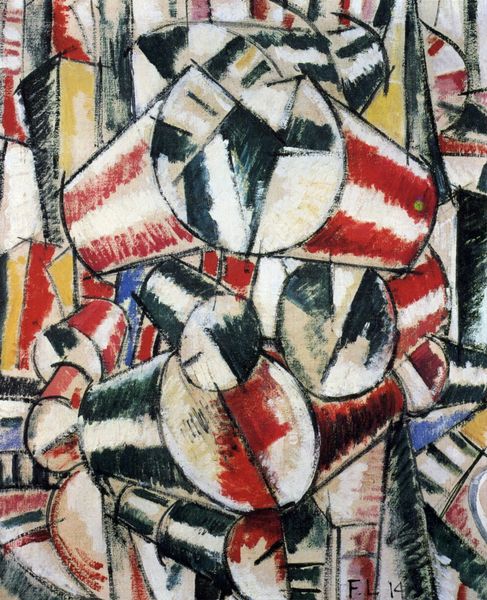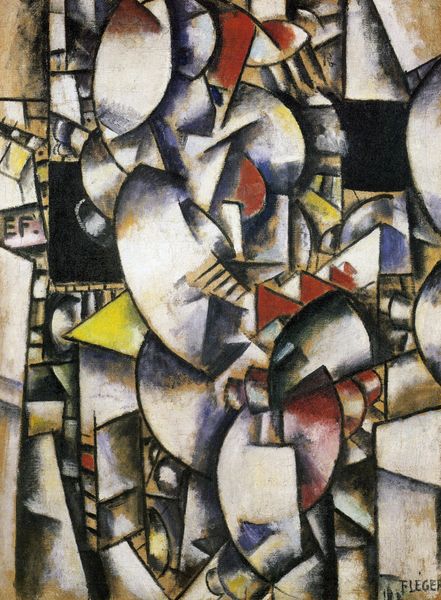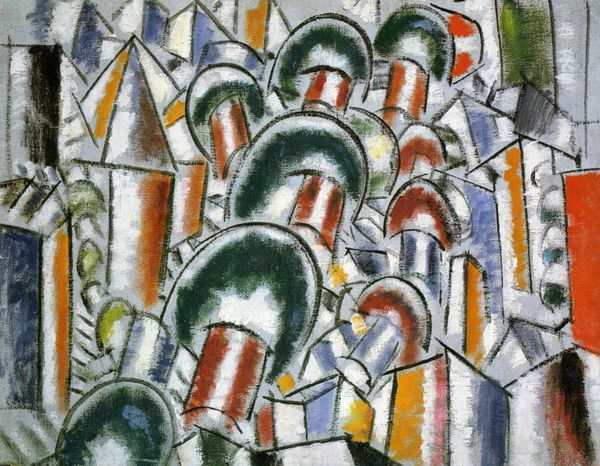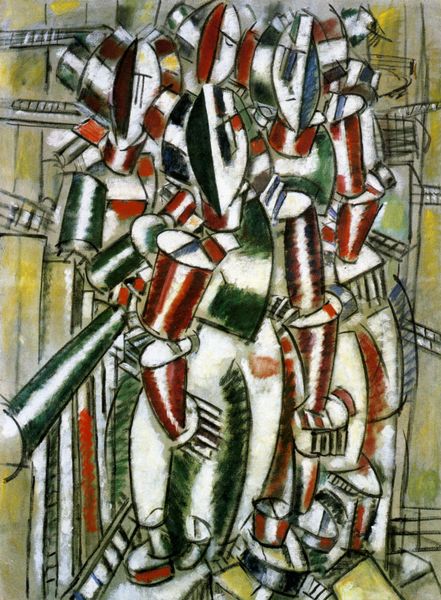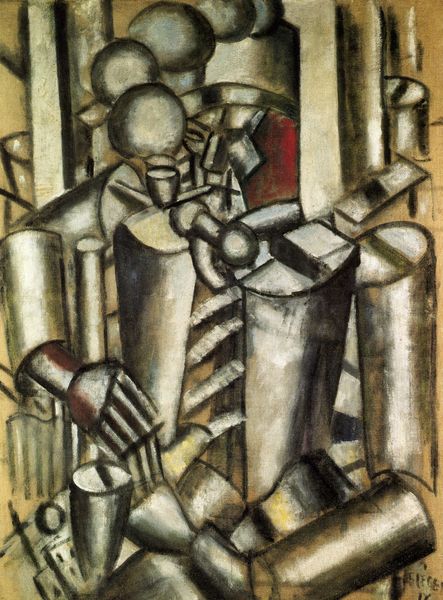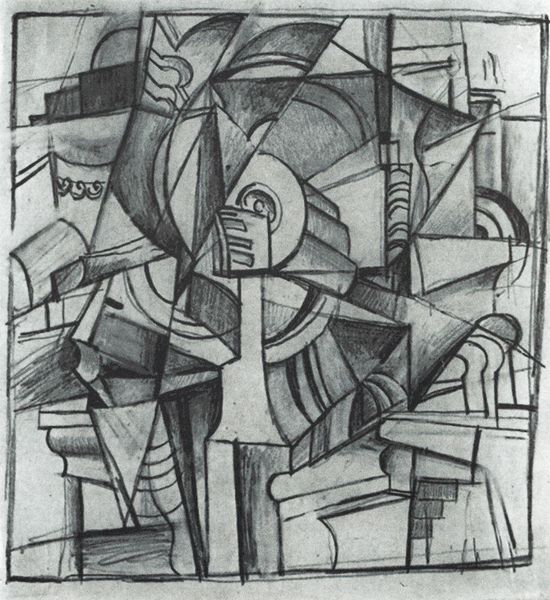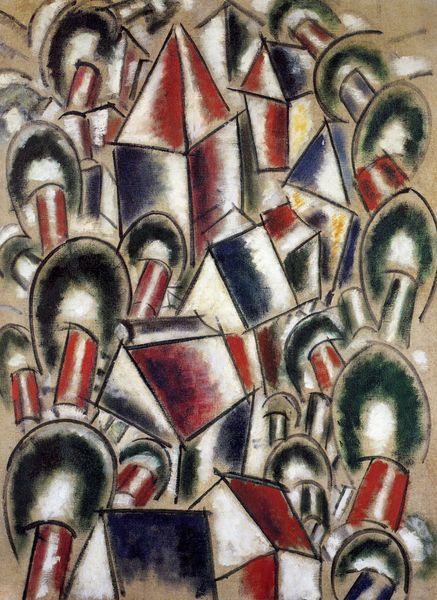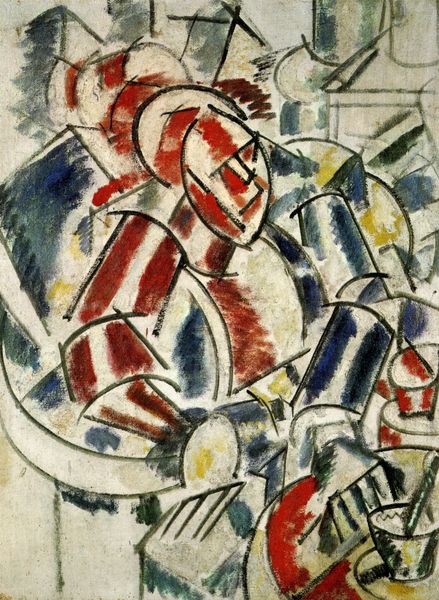
painting
#
cubism
#
painting
#
form
#
geometric
#
line
#
cityscape
#
futurism
Copyright: Public domain US
Curator: We're looking at Fernand Léger's "The Staircase," painted in 1914. A complex composition awaits us. What strikes you first? Editor: The aggressive geometry. It's almost violently architectural. The rigid, fragmented forms—they’re like industrial components exploded and reassembled. What’s the key compositional device, would you say? Curator: Consider the era: mass production and urbanization deeply impacted Léger. He doesn't just represent stairs; he depicts the experience of ascent within a mechanized environment. Look at how cylindrical shapes, and standardized, modular forms are repeated. These point to new processes and technologies impacting culture. Editor: Precisely! Notice how Léger uses these forms to explore rhythm and spatial dynamics. The limited color palette emphasizes the painting’s structure, a visual language independent of mimetic representation. How do the formal aspects relate to the societal context you are referring to? Curator: Well, it is not enough to simply see this as abstract or non-objective, the colors and lines, and sharp edges embody how manufactured environments change social realities, dictating people’s interactions and labor conditions in an increasingly dehumanizing reality. Editor: Interesting perspective. I was mostly focused on the sheer dynamism that emanates from the piece. Léger’s arrangement almost conveys motion, a step, if you will, towards Futurism. The fractured planes and bold contours seem to capture the fleeting sensations of modern life, even outside labor concerns. Curator: And what about how these fractured spaces mirrored fractured identities? New technology had effects way beyond factory production. How the artist experienced the world was changing fundamentally. Léger reflected these changing perceptions using angularity to highlight the sense of alienation. Editor: I see. Still, I find its strength lies in the autonomy of form—the work functions on its own visual terms. The relationship of line, color, and shape generates the tension, the energy… Curator: All informed, though, by tangible shifts in the world's construction and lived experiences... Editor: It all builds together—literally! From form to context, a truly stimulating visual and intellectual climb. Curator: Precisely. By investigating the materials and social context behind it, "The Staircase" demonstrates how artwork informs social evolution by embodying shifts in production.
Comments
No comments
Be the first to comment and join the conversation on the ultimate creative platform.
